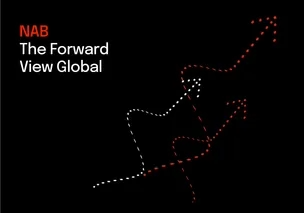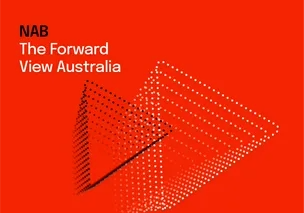21 August 2025
Capital Markets
November 19, 2024
State of sustainable finance in focus at ASFI industry summit
NAB Executive, Capital Markets, Sarah Samson shares her insights after appearing as a special guest panellist at the recent 2024 Australian Sustainable Finance Summit held in Sydney.
By Corporate and Institutional Banking
While there have been significant advances in Australian sustainable finance over the past 12 months, the steady inflows of labelled capital have yet to achieve the record issuance volumes and spike in momentum seen in 2021 as the market continues to evolve.
Instead, the most notable progress this year has been driven by government in areas of public policy and regulation, with more work still to be done for the industry overall to achieve Australia’s transition task[i].
This was the backdrop to a special panel discussion held at the 2024 Australian Sustainable Finance Summit in Sydney recently, where industry participants connected to help identify priorities and opportunities for further growth in the year ahead.
NAB Executive, Capital Markets, Sarah Samson told the session Australia had closely followed global trends, with the growth in green and sustainability use of proceeds bond issuance being offset by declines in sustainability-linked debt.
“Our view is there is definitely more willingness from issuers and more appetite from investors coming on,” Samson said, pointing to NAB’s recent experience helping develop and launch Australia’s inaugural $7 billion sovereign green bond, with a significantly oversubscribed book of more than $22 billion in bids from 105 investor institutions[ii].
Increased activity
Samson was speaking at this year’s annual marquee event held by the Australian Sustainable Finance Institute (ASFI), a professional organisation committed to driving alignment of the nation’s financial system with sustainability principles[iii].
Her positive outlook comes as the sovereign green bond program joins other increased public sector activity from governments and semi-government institutions. There has also been an increasing number of securitisation issuers and more kangaroo green, sustainability and social (GSS) issuers – including from corporates offshore, she says.
“The presence of these more active large, liquid and highly rated public sector issuers has notably increased the liquidity, scale and appeal of the Australian sustainable debt markets for investors. This should incentivise more corporates to issue in similar formats to fund their net zero transition plans and sustainability objectives.”
Samson says there has already been significant recent growth of private labelled transactions in loan formats where borrowers are implementing their own climate transition and sustainability strategies and building in-house capabilities to meet legislated climate and future nature-related reporting.

Activity is coming from funds, real estate investment trusts (REITs), corporates and securitisation warehouses, with Samson expecting to see more of these participants being able to access public debt markets in future.
Most notable, she says, is in the utility scale project finance space, with significant liquidity in market from bank and private capital there to help the nation transition.
“There is no shortage of bank and private capital willing to be put to work and it is very competitive in bank funding for large scale renewables,” she says.
A challenge for these projects remains the uncertainty in the planning process and pace of delivery, along with access to the grid and rollout of new transmission and distribution to connect the development pipeline, she says.
Investor confidence
The introduction of mandatory climate-related financial reporting[iv] from January 2025 for large entities operating in Australia has been another significant step over the past year, something Samson says is of “critical importance” in providing credible, comparable information to support capital markets function effectively.
A consistent theme coming from both investors and borrowers is the need for harmonisation of climate and sustainability disclosures globally. As such, she is pleased to see the Australian reporting framework line up with the International Sustainability Standards Board (ISSB) disclosures with minimal changes.
“In a competitive global environment, we need to give investors confidence in what they are investing in,” Samson says. “Offering credible and comparable information will help to minimise risk and be a real positive for capital markets.”
She sees the transition theme is the biggest one on the horizon for 2025, with financing needing to evolve to help support customers as corporate Australia increasingly accesses funding for these projects.

As part of NAB’s role as a leading provider of sustainable finance products and services[v], some recent innovation includes extending sustainability objectives into derivatives products through the Markets business[vi].
Samson cites the opportunity for development of a transition bond market in Australia as a key priority among further industry innovation needed in the year ahead.
“We look forward to further innovation in products and services for customers as we progress into 2025 and beyond. Connecting with other industry professionals at ASFI and talking to your banker is a fantastic way to help drive Australia’s sustainability ambition forward and help achieve real change.”
[i] ASFI_2024+Progress-Tracker_FINAL.pdf, opens in new window
[ii] Australia issues inaugural $7 billion green bond | Treasury Ministers, opens in new window
[iii] Australian Sustainable Finance Summit 2024 — ASFI, opens in new window
[iv] Treasury – Mandatory climate-related financial disclosures
[v] Sustainable finance | Corporate and Institutional – NAB, opens in new window
[vi] NAB FX innovation powers IFM Investors | Business Research and Insights
Corporate and Institutional Capital Markets Debt Capital Markets Sustainability


